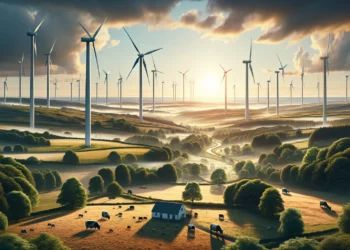Fresh from the GE Global Research lab is this tiny monster: a turbine small enough you can hold in your hands, but powerful enough to provide energy to a whole town. It’s secret lies in a couple of design features, but also the power agent. Instead of steam, the “minirotor” as it’s been nicknamed is driven by supercritical carbon dioxide.

The carbon dioxide is heated to 700 °C under high pressure which causes it to enter a state called supercritical — neither gas, nor liquid. Once it passes through the turbine, the CO2 is cooled and then repressurized for another pass, MIT Technology Review reports.
Most turbines today used for energy generation are powered by steam. The GE design is better in almost all respects thanks to using the supercritical carbon dioxide. For one, it’s 50 percent efficient at turning heat into electricity, versus 40 percent in the case of steam. Secondly, less compression is required and heat transfer can be achieved. Finally, it only takes a couple of minutes to crank up the GE turbine, whereas steam needs at least 30 minutes to form.
In a coal power plant, for instance, this startup issue isn’t much of a problem since these are designed to function more or less around the clock. The short waiting time of the CO2 turbine, however, makes it excellent for generating power from stored electricity. Instead of using batteries, a solar park could store the energy in salts. These are melted, then stored in insulated containers. When the energy is needed, the molten salts can be pumped out to release their heat through a heat exchange system.
“The key thing will come down to economics,” says Doug Hofer, the GE engineer in charge of the project. While there’s work ahead, he says, “at this point we think our economic story is favorable compared to batteries.”
For now, their prototype is for a 10MW turbine, but it could be easily scaled to the 500MW range, the GE engineers say.






